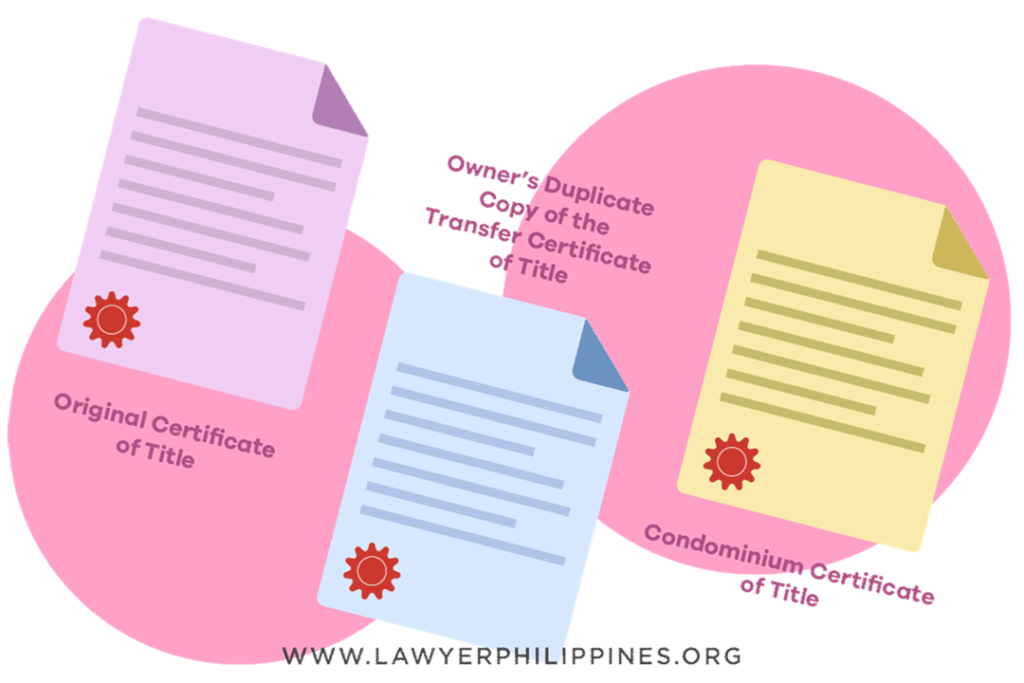What To Do When You’ve Lost Your Philippine Land Title
In the Philippines, if you have lost your Land Title you will need to go to court to get a new copy. The Lost Title process in the Philippines requires a court case before a replacement can be issued to you.

Have you lost your Original Philippine Land Title?
This post explains:
- The detailed, step-by-step Lost Title process you need to go through
- Actual documentary requirements and how to comply with them for Reissuance of Title.
- Practical advice from your point of view (no unnecessary legalese, I swear).
While the process might seem inconvenient, replacing your lost Land Title is very important. You need it to sell, lease or otherwise maximize the property.
If you would like to discuss the issue with a lawyer feel free to contact us
Why is a Land Title important in the Philippines?
A Philippine Land Title is the most important document you have that proves your ownership of property.
An Owner’s Copy of a Land Title is one of the two types of documents that are required to prove ownership.
The other document that proves your ownership is the Registry of Deed’s copy of the Land Title, which is different from your Owner’s Copy of a Land Title.
The Philippine Land Title that you have can be called different names, depending on the circumstances:
- Original Certificate of Title – issued to owners when the land is first registered
- Owner’s Duplicate Copy of the Transfer Certificate of Title – issued to subsequent owners after the registration.
- Condominium Certificate of Title – issued to owners of condominium units
All these different names still really just mean that it is an Owner’s Land Title.

An Original Owner’s Title is the best evidence of ownership of the property.
Now, you might think that an Owner’s Land Title isn’t important since you already live on the property.
This couldn’t be further from the truth.
It is difficult to sell, mortgage or lease your property when you don’t have the Title. It is also difficult for your property to be inherited by your children.
Essentially, you need the Owner’s Land Title to transfer or use the land for more than your personal residence.
Lost Land Title Philippines or Reissuance of Land Title Philippines
An Owner’s Title can be lost in many ways.
I’ve come across instances of fire, flood and theft. I’ve heard stories of simple misplacement. And in a battle of termites vs often fragile Land Titles, the termites won.

Has your Owner’s Title been destroyed?
In all these situations, the only way to replace your lost Land Title is through a court process called Reissuance. The Reissuance of Title process is laid down by the law in Sec 109 P.D. 1529 and there is no other way around it.
Just a few things to be aware of.
Reissuance shouldn’t be confused with Reconstitution of Title.
Reissuance is when your Owner’s Title has been destroyed.
Reconstitution is when the Title to your land held by the Registry of Deeds is also destroyed. You can read more about this process in my article How to Reconstitute a Philippine Land Title.
Reissuance is what we discuss in detail here.

You’ll mostly likely have to go to court to replace your missing Owner’s Title.
Another thing to be aware of is a Reissuance of Title court case shouldn’t be resorted to if the Title is with a 3rd person such as a Lender.
Some people wrongly believed that if they process a Reissuance of Title when the Title is in the hands of a 3rd party like a lender it cancels the debt.
But there is a big risk that the new Land Title will be declared invalid, as was the case for the Heirs of Leticia Lopez-Cuevas vs. Republic of the Philippines [G.R. 170539, Jul 2008]
Reissuance of Land Title Process

You need to file the court decision with the Registry of Deeds in order to start the processing of your new Land Title
You’ll find the step by step process below.
There is really no way to replace a lost Land Title except through a court case.
Quick Facts
Case: Reissuance of Lost Owner’s Title
Timeline: 1 – 1 ½ years, depending on the court’s schedule
Cost: Court Fees, Registry of Deeds Fees, Lawyer’s Fees
Testimony: At least once, or more as needed by the court
Documents: Annotated Loss on Certified True Copy of Title, Tax Declarations and Assessments, Other documents required by the court.
Step 1: Filing an Affidavit of Loss with the Registrar of Deeds For the Reissuance of Title
An Affidavit of Loss identifies the property through its Title number and its Tax Declaration.
It is created with your Attorney and then filed with the Registry of Deeds where the property is located. This Affidavit should explain to the Registry of Deeds how the Title was lost.

You’ll need to start with an Affidavit of Loss.
It is important to file an Affidavit of Loss with the Registry of Deeds. When people inquire about the property with the Registry, they will be informed that the Owner’s Title has been lost. This prevents unscrupulous people from claiming they are the owners of the property.
You can also take this opportunity to gather other essential court documents that you will need. For instance, the Certified True Copy of Title and Tax Declaration among several others.

You’ll need many documents to prove your ownership at court.
The filing fees paid to the Registry of Deeds to register an Affidavit of Loss can vary. The fees will be higher if you are also gathering other essential court documents from the Registry of Deeds..
Step 2: Filing for Reissuance of Land Title with the Regional Trial Court.
The next step in the lost Land Title process is to create your Petition with your lawyer requesting the court to issue a new Owner’s copy.
The Petition will need several documentary attachments, all proving that you are the owner:
- The Affidavit of Loss that you filed in step 1.
- A Certified True Copy of Title showing your name, which you can get from the Registry of Deeds
- Tax Declaration and all its attachments from the Municipal Hall where the land is located
- Other documents and requirements complying with the rules of court, which your attorney will be aware and will advise you of.

Your Petition at court must have all the documents and explain why the Land Title was lost.
It may be difficult to get the documents required but it is important to complete them and follow what your attorney advises. It is on the strength of this documentary proof that your case will be decided.
This Petition will be filed with the Regional Trial Court where the land is located.
Filing fees and attorney’s fees will need to be paid.
Step 3. Reissuance of Title: Testifying in Court
You should ideally go to Court at least once to testify to the facts of the case.
You may have your co-owner do this but the point is that the court needs to hear from you as to the validity of the facts.

You should ideally go to Court at least once to testify to the facts of the case.
Note that this primer is built from your point of view. This is what is of interest to you – what you need to accomplish, review and gather and when you need to appear in court.
However, there are several other court requirements your attorney will be complying with as part of the lost Land Title process.
Step 4. Reissuance of Land Title: Court Decision

The Court will issue a Decision based on the evidence you’ve presented.
All interested parties have to be informed by the court that a file for Reissuance has been made. This is so that later on a person cannot file a challenge based on the fact that s/he was not informed.
However, this also enables people to oppose the process. They may oppose it by saying that they have the Title or that the person requesting Reissuance doesn’t have the right to the property.
It can get really really complicated. There are all sorts of reasons.
Generally, a person may oppose the Reissuance during the court process but after the Court Decision has been rendered final, there is nothing else that they should be allowed to do based on the grounds.
The Court will decide based on the Evidence you and your attorney submitted.
If all goes well and if you have strong documentary proof, your case will likely be approved.
The Court’s Decision will become final when no-one challenges the case.
A case can be challenged when someone who has a share in the land or if the City Prosecutor objects.
Step 5. Filing of the Court Decision at the Registry of Deeds
After the Court issues its decision, you need to register the Court Decision with the Registry of Deeds.
This will start the process to get your new Land Title.
This is often a bothersome process as it can necessitate several trips. You will also need to pay to register with the Registry of Deeds.
They will process your request and you will finally be issued a new Land Title.
What To Do When You Have Lost Your Philippine Land Title: Summary
As promised, this is a primer on how to get a new Land Title. It gives you the information that is really pertinent to you in terms of process, documents and fees. It really also tries to detail the lost Title process clearly and concisely.
Your lawyer will handle other court requirements as they come along, but these have to deal more with complying with Philippine law or Orders of the court.
Your lawyer will also guide you regarding any additional requirements. These may vary depending on the specific facts of your case.

Choose a lawyer you trust
Do choose a lawyer you can trust if you plan to file for a Reissuance of Land Title process.
A good lawyer will keep you updated and show you the written submissions to the court.
Do not be tempted to go through a “Middle Man” or someone who claims to have “connections”.
There are too many people who are victimized by unscrupulous people claiming they can easily issue a new Land Title or can secure a new Title quickly.
This is untrue and you may lose a lot of money and be faced with a court case against you if things go badly.

Do not hire a middleman! They can cause you a great deal of trouble and cost you more money.
Do things above-board and you will have nothing to fear.
In addition, your case will often be much faster if you go through the process with a good lawyer. We have heard of promised “quick fixes” taking years!
As you can see the replacing a Lost Title process is straightforward.
Although it will depend on the facts of your particular case, your Petition for a new Land Title will likely succeed if:
• You have all your documents and strong proof
• You are involved in the process and can provide information
With this, the court will likely grant your request and you will get your new Owner’s Title without too much trouble.
Atty. Francesco C. Britanico, FCB Law Office
Lawyers In the Philippines
Other Articles about Land Titles include:
Philippine Land Title Search
How to Transfer Land Title To Heirs
How to Reconstitute a Philippine Land Title






132 Comments